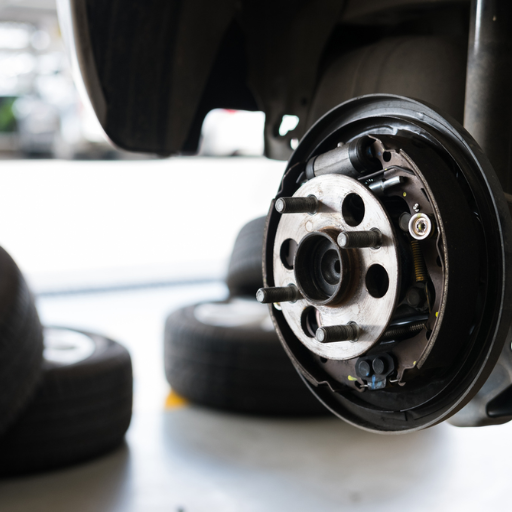Vehicle maintenance has its own set of priorities, and some of these can prove to be expensive. One such element that tends to be ignored until it fails is the wheel bearing. Since they are required to maintain the performance and safety of your automobile, wheel bearings are vital as they provide ease of rotation by reducing the friction present. However, how much will it cost you in case this important component gets damaged? In this article, we will examine the wheels’ bearing replacement cost factors, including parts prices of the car, labor charges, and the dangers of postponement of repairs. Are you dealing with the problem of failing wheel bearings, or do you just want to know about it? Worry not; we will help you get ready for this common and yet very crucial car repair!
What are the signs of a failing wheel bearing?
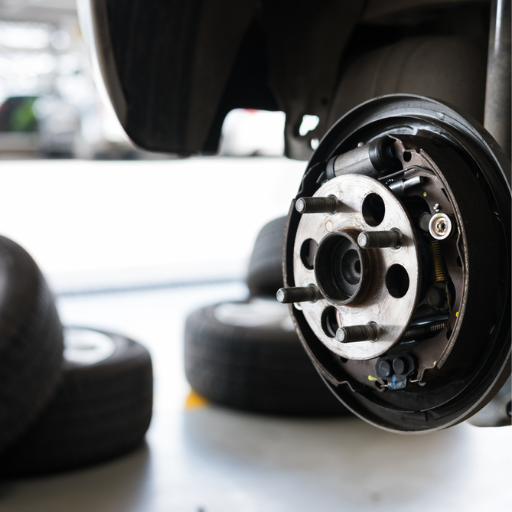
Carelessness when dealing with these issues can have a detrimental effect on the performance of your vehicle and compromise your safety while driving. Remember that damaged parts in your car will not be derecognized in the following period. In most cases, degraded bearings will have a few clear indicators. One of the most obvious ones is a noticeable grinding or humming noise that seems to only increase with the car’s rate of speed. Other signs include uneven tire wear, a steering wheel that vibrates or wobbles, and increased instability while turning the car. When your wheel bearings are severely worn out, you may be able to hear excessive heat in the area around the wheel hub. Ignoring the above-mentioned symptoms of a failing component may lead to further vehicle abuse, hence the additional mention of the vehicle getting damaged.
Grinding noise when driving
Based on my work experience in the auto industry, if a grinding noise comes while driving, it’s a tell-tale sign of a bad wheel bearing. This is usually heard the most when one accelerates or goes around corners since this is when the bearing is being loaded during motion. Neglecting that noise can result in greater damage as well as other parts, such as the axle or suspension failing down the road. To prevent aggravating the problem, my suggestion is to get it checked right away so as to avoid any complications and to make sure the vehicle is safe for driving.
Steering wheel vibrations
Usually, a vibrating steering implies that there is a problem that needs to be considered. From my perspective, I believe that there should be some common reasons for this issue, and knowing them helps in getting to the origin of the problem. The most pertinent parameters are:
- Wheel Balancing: Wheels that are not balanced tend to rotate at different speeds, which leads to the problem of a vibrating steering wheel. The wheel being imbalanced results in an uneven weight repartition around the wheel center, which causes vibrations that increase as the speed goes up.
- Tire Condition: Irregular pattern of tread wearing of the tire, bumper tire, or bulges can also be the cause. The condition of the tires works against the wheels enabling smooth movement of the vehicle and causing vibrations to pass on to the steering in this process.
- Brake Rotors: A brake rotor serves the purpose, when a car is pressed, it spins the wheels while at the same time an inner rotor squeezes braking pads against it to bring rotational energy to a halt in implementation. When one uses the brakes and feels a vibrating sensation, the likelihood is that the brake rotors might be the cause.
- Wheel Alignment: If the wheels are not aligned properly, they will not fit together with the road surface properly, making contact with the road surface discontinuously. Since the wheels are making intermittent contact with the surface of the road, the steering will naturally vibrate. This happens frequently while driving over potholes or curbing the vehicle.
- Suspension and Steering Components: If the wheels are not aligned properly, they will not fit together with the road surface properly, making contact with the road surface discontinuously. Since the wheels are making intermittent contact with the surface of the road, the steering will naturally vibrate. This happens frequently while driving over potholes or curbing the vehicle.
In case your vehicle has a vibrating steering wheel, factors such as wheel balancing, suspension, alignment, hub, wheel, and tire problems need to be properly addressed, as failure to do so will not only affect comfort but will also impair the safety and performance of the car. Always seek professional help from a car mechanic to find the reason for the problem and rectify it.
Uneven tire wear
Based on what I have witnessed, unreasonable tire wear and tear is an obvious sign of problems relating to misalignment, suspension, or low tire pressure. Uneven tire wear can affect performance, consume more fuel, and might even pose a risk safety-wise. Regular maintenance of cars should always include checking if the alignment is done right as well as whether the tire pressures are at a correct level. Regular rotations will promote even tire wear and extend tire life. If you avoid discussing or trying to resolve uneven tire wear, it will lead to deeper and more expensive problems in the future.
How much does it cost to replace a wheel bearing?
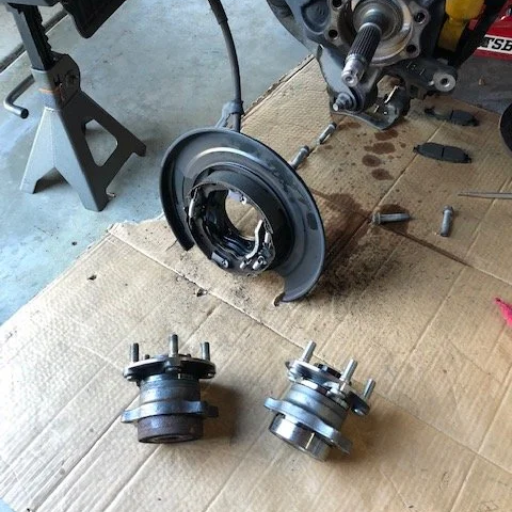
Wheel bearing replacement costs are a little complicated since they mostly depend on the make and model of the vehicle in which you are replacing it as well as the labor rates in your area. So, usually, it costs between $150 to $500 per wheel. Such prices are usually inclusive of labor, which makes up a lot of these amounts, especially because a wheel bearing replacement, in most cases, needs the disassembling of parts of the suspension or hub assembly. It’s best to have a detailed estimate from one of your trusted mechanics to get clarification as to which parts of the wheel bearing replacement come at what charge, as from my experience, this will help you know if good quality parts sourcing and installation are done for this vital part.
Average cost for front wheel bearing replacement
There are various factors that come into play before arriving at the cost of replacing a front wheel bearing. I shall discuss them in turn:
- The Cost of the Wheel Bearing Itself
Bearings can be wheel bearing prices are different from one make of the vehicle to the other. In general, however, the bearing alone will range from around $50 to $200. Parts for luxury and other specialty vehicles may cost more, so be aware of what your car demands.
- Labor Costs
Labor tends to be the most expensive when it comes to the whole cost. The cost is highly influenced by how complicated the whole replacement process is. For instance, in certain models, the replacement of a wheel bearing necessitates the disassembly of certain hub assembly or suspension parts, which increases overall labor hours. Labor charges can range anywhere between $100 and $300 or even more depending on how long the mechanic takes and the average labor charged in your region.
- Additional Necessary Repairs or Equipment
Mechanics during the course of the repair may discover that other parts adjacent to the wheel bearing require replacement as well. One could be the wheel hub, which would mean additional expenses. It’s also possible, though not always needed, that after the replacement of a wheel bearing, some vehicles have an alignment check for which you may have to spend extra.
- Geographic Location
The difference can also be noted based on the region in which the patient is located, such as when fixing a wheel bearing. Urban areas or cities tend to charge more than the countryside or smaller towns.
Considering all these factors, the final price is typically somewhere in the neighborhood of $150 to $500 for a single wheel. Let my suggestion be this: never allow a repair to begin without getting a proper quote. A competent mechanic will explain the costs for the components, the work, and any other details needed to ensure your clarity. It’s also worth mentioning that the longevity of the wheel bearing and your safety while driving is highly dependent on the quality of parts you use and the correctness of installation.
Factors affecting wheel bearing replacement cost
In my personal opinion, sources such as bearing.com tend to overlook the purpose of the bearing assembly,y which essentially dictates the factors affecting the wheel bearing replacement cost. Other activities I engage in are import and luxurious vehicles that tend to have more expensive wheel bearing replacements because of complex design and higher material quality used. Depending on whether the parts are purchased through an OEM or aftermarket source would also greatly affect the cost estimate. Since systems like front suspension systems are more complicated, I believe there would also be higher labor costs because the time taken and the skill required would be relatively higher. What’s more, the region is a factor – it’s obvious that some areas around the world seem to pay their mechanics differently than others, so it’s best to get price range estimates.
DIY vs. professional replacement costs
In my opinion, I believe that the consideration and choice of either DIY or engaging a professional replacement are totally reliant on your competence, tools, and time. If you are comfortable operating on suspension parts, then doing the work yourself can reduce the amount of labor paid drastically which sometimes reduces the total costs by half. But don’t forget to include the amount paid for any special tools that you may have to buy. As a matter of course, on the other extreme, choosing professional replacement means getting the work done right and safe, especially in the more complicated setups or newer vehicles that incorporate technologies that are harder to troubleshoot. The only drawback is the initial cost outlay, but the knowledge and guarantee that many shops offer on their work can be worth every penny spent in the long run.
Can I drive with a bad wheel bearing?
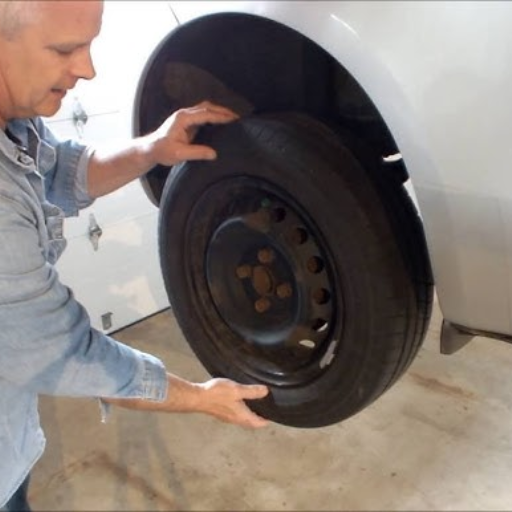
It is highly not recommended to drive a vehicle with a bad wheel bearing. Wearing out a wheel bearing damages the handling of the vehicle, increasing the chances of an accident and damaging the hub, axle, or suspension further. You will want to be very cautious if you are unsure of a wheel bearing, as it would save you a lot of money and effort in the long run.
Risks of driving with a worn wheel bearing
Operating a vehicle with a damaged wheel bearing is risky because it can increase instability and uneven tire wear and surely result in catastrophic bearing failure, leading to extreme detachment of the wheels. Moreover, such a failure may enhance latencies in brake applications as well as worsen the situation on the road. Tackling the problem beforehand avoids these threats and provides safety for both yourself and your car.
How long can you safely drive with a failing bearing?
Based on my experience, I can tell you that driving with a failing wheel bearing is something that should be avoided at all costs. It may be possible to drive for few more miles but this kind of bearing is bad news for it can only get worse, it is wise to minimize risks. In case of any grinding or growling noises, vibrations or uneven handling I suggest to get the problem fixed right away. Ideally, you may be able to make quick, necessary visits to a garage; however, driving longer than absolutely necessary may be disastrous as you risk dislocating a wheel and severely damaging adjacent areas in the process. Urgent repairs have always been the best option in this kind of situation.
What’s involved in a wheel bearing replacement?
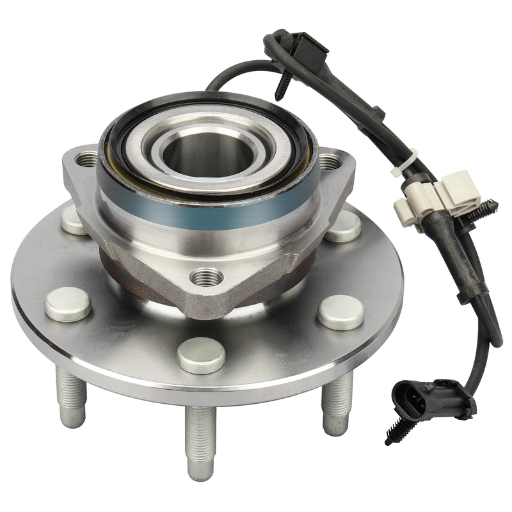
The wheel bearing replacement bearing replacement consists of a number of major processes, especially removing the faulty one. The vehicle is first elevated and then detached from the wheel together with the brake assembly so as to access the hub. The defective bearing is then taken off using specialized tools that do not damage other components. The new bearing is often pressed into the hub, which is precisely fitted. This is followed by reassembly of the wheel and the brake components, after which the vehicle is tested for proper alignment and functionality. The process itself requires a fair level of expertise so it is highly recommended to get professional assistance.
Steps in the wheel bearing replacement process
- Secure the Vehicle
I begin every vehicle repair by confirming that the car is brought to a flat location, parked securely, and raised with the help of hydraulic jacks and jack stands. From the very first step of the process to the very last, safety is of utmost priority.
- Remove the Wheel and Brake Components
Now, I proceed to take off the brake components, such as the calipers, rotors, etc., along with the hub assembly. Doing this provides us with the necessary clearance.
- Access and Remove the Faulty Bearing
Once the brake assembly is unhinged, I remove the bearing using engineered tools. When performing this step care is taken in order to not damage the hub or any other surrounding parts.
- Prepare and Install the New Bearing
I start by cleaning up the hub area, and then I use a bearing pusher to press the new bearing into position. For every example, aiming for precision and perseverance with other such measures will always yield positive a result.
- Reassemble Components
In the end, I put together the remaining brake parts and the wheel and checked if everything had been properly twisted to safety and operational standards by the manufacturers.
- Test the Vehicle
To come to a conclusion regarding how successful the repairs have been, I take the vehicle for a drive. Noxious sounds and other abnormal signs out of the ordinary are something that I will always take note of in order to estimate that the movement is clean and safe.
Are there ways to reduce wheel bearing replacement costs?
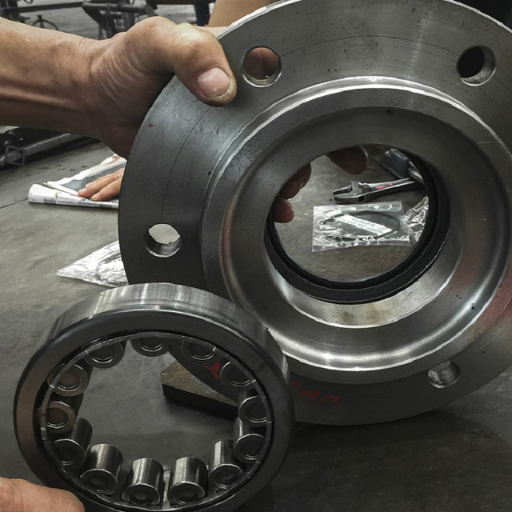
Without a doubt, there are some reasonable strategies aimed at cutting a wheel bearing replacement. First and foremost, I would suggest always looking for quality aftermarket units, as they tend to be cheaper than OEMs without pricing themselves out on dependability. Another tenet would be that one should actively participate in routine maintenance, such as having properly inflated and balanced tires, which would extend the lifespan of your bearings. If you have any mechanical skills, it will help with cutting down labor charges significantly, but it’s important to note that one must have the correct tools and sufficient knowledge to execute this with care. Lastly, taking care of small troubles earlier, such as experiencing unusual sounds or vibrations, can help avoid more costly fixes in the future.
Comparing prices from different auto repair shops
In order to enhance your chances of getting a free estimate from the auto repair shops of your choice, you should write and sign a detailed estimate requesting shop managers to itemize each and every mechanical work to be performed. This can also be used as great leverage in case parts of the work have been outsourced, as you could compare initial estimates with other shop’s tariffs on parts. Apart from all these, searching for other people’s opinions, such as reviews, will help to establish the credibility of the shop. Remember, this is crucial as the cheapest option is not always the wisest choice available to provide us peace of mind about our investments into repairs. Rather, look for estimates of auto repair shops that guarantee their jobs.
Considering aftermarket vs. OEM parts
I would suggest evaluating your priorities, especially when considering whether to go for OEM or aftermarket parts for your vehicle. OEM parts, in contrast, Consider the quality and power of your automobile. Such parts are made for fitting on a specific vehicle and performing consistently, but they will be quite expensive. Aftermarket components, however, can often be cheaper and even better than the original ones. It is critical to know what the component’s function is and how well it is made because if quality and durability are most important to yo,u then you will most likely opt for OEM parts. For components that are not crucial or for minor repair parts, considering Aftermarket parts would be good, provided they are sourced from established manufacturers as they have tremendous value.
Importance of regular wheel bearing maintenance
It’s vital that wheel bearings are serviced properly for the safety and functionality of the automobile. It is my personal opinion that disregarding this very important part can contribute to the excessive damage of one’s tires and suspension, as well as present a chance of premature failure while on the road. Preventative maintenance by way of inspecting wheel bearings ensures that problems such as too much friction and poor lubrication are rectified at a very early stage to avert expensive and impending road hazards. I always advise eavesdropping for strange sounds, such as rumbling and thundering, and sorting them out as fast as possible so that the vehicle operates normally without any unnecessary issues. With the right care, in addition to making it more efficient, servicing these parts ensures they last long and are safe to drive.
Reference
- Kelley Blue Book: Provides national average costs and insights into how luxury brands might affect pricing.
- Car Talk: Offers a detailed breakdown of average costs for wheel bearing replacement, including labor and parts.
- Quora: Discusses retail prices and considerations for DIY replacement versus professional services.
Frequently Asked Questions (FAQs)
Q: What is the average cost of a wheel bearing replacement?
A: The cost of replacing a wheel bearing can vary widely depending on the make and model of your vehicle. On average, you can expect to pay between $200 to $800 per wheel. For example, a Toyota might be on the lower end of this range, while luxury or performance vehicles could be more expensive. This price typically includes both parts and labor.
Q: How do I know if I need to replace my wheel bearings?
A: There are several signs that your wheel bearing needs replacement. These include unusual noises like grinding or humming coming from the wheels, uneven tire wear, steering wheel vibrations, or the car pulling to one side while driving. If you notice any of these symptoms, it’s best to have your vehicle inspected by a professional to determine if the bearing is going bad.
Q: Can I replace a wheel bearing myself to save on costs?
A: While it’s possible to replace a wheel bearing yourself if you have automotive experience and the right tools, it’s often not recommended. The process can be complex, especially for sealed wheel bearings or those integrated into the hub assembly. It may require specialized tools and putting your car on a lift. For most people, it’s safer and more efficient to have a professional service perform the replacement.
Q: How long does a wheel bearing replacement service typically take?
A: The time needed to replace a wheel bearing can vary depending on the vehicle and the specific bearing type. Generally, it takes about 1-2 hours per wheel. However, if the bearing is part of a sealed hub assembly or if there are complications with the steering knuckle or axle, it could take longer. Always ask your mechanic for a time estimate before the service begins.
Q: Are front and rear wheel bearings the same in terms of replacement cost?
A: The cost of replacing front and rear wheel bearings can differ. Front wheel bearings often cost more to replace because they’re usually more complex and bear more weight. Rear wheel bearings might be less expensive, but this can vary depending on your vehicle’s design. Some cars have different types of bearings (like roller bearings) in the front and back, which can also affect the cost.
Q: How often do wheel bearings need replacement?
A: Wheel bearings are designed to last for a long time, often 100,000 miles or more. However, this can vary based on driving conditions, vehicle type, and bearing quality. Regular inspections during routine maintenance can help catch a damaged wheel bearing early. If you frequently drive on rough roads or through water, your bearings may wear out faster.
Q: Can I drive with a damaged wheel bearing?
A: It’s not recommended to drive with a damaged wheel bearing. A failing bearing can cause the wheel to seize or even come off while driving, leading to a dangerous situation. If you suspect a wheel bearing issue, it’s best to have it checked and replaced as soon as possible to ensure your safety and prevent further damage to other components.
Q: How can I get an accurate wheel bearing replacement cost estimate?
A: To get a free detailed estimate for wheel bearing replacement in your area, consider contacting local auto repair shops or dealerships. Provide them with your vehicle’s make, model, and year. Some online platforms also offer cost estimators based on your location and vehicle details. Remember that the final cost may vary depending on the specific condition of your vehicle and any additional work needed.

